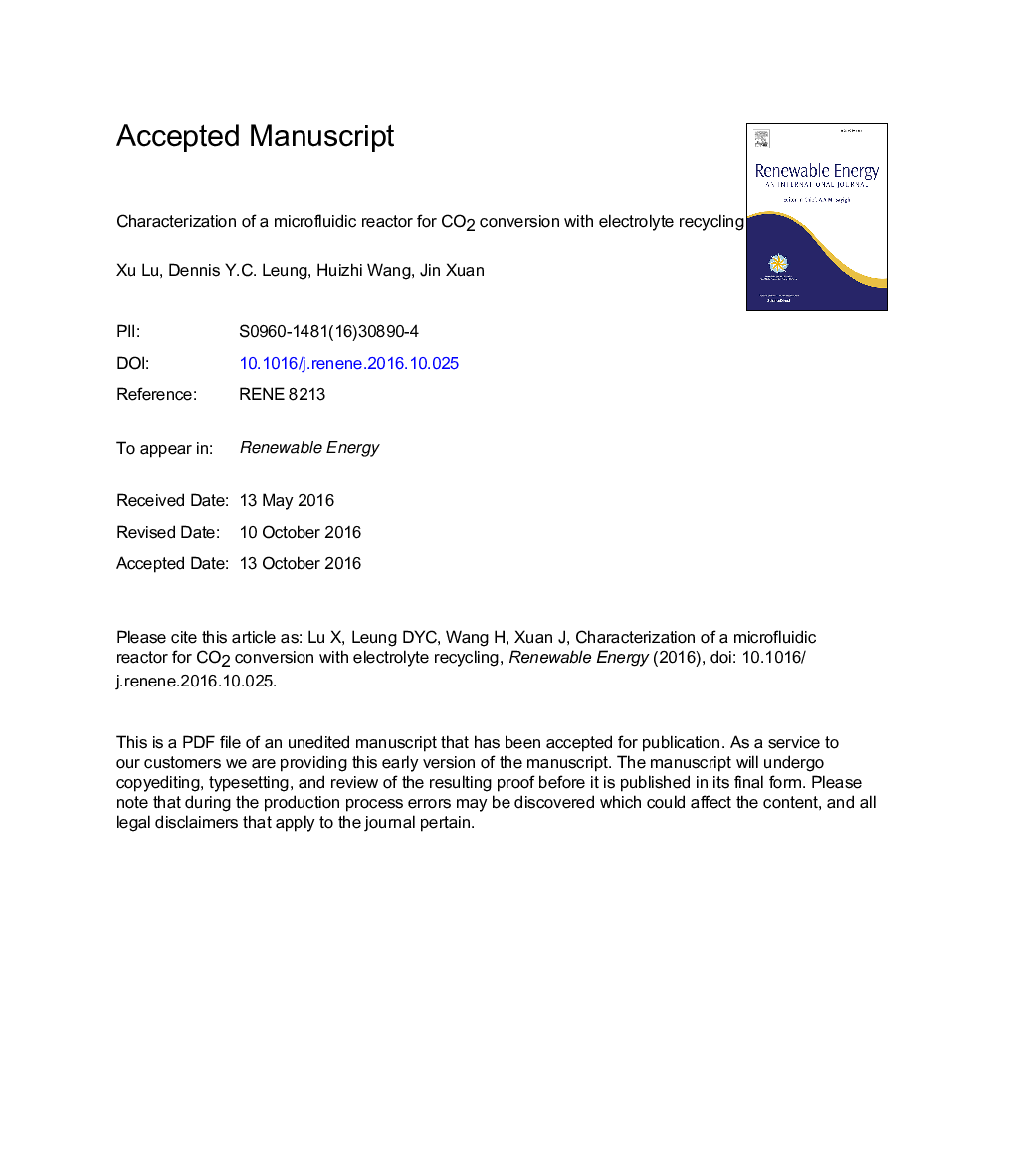| Article ID | Journal | Published Year | Pages | File Type |
|---|---|---|---|---|
| 4926802 | Renewable Energy | 2017 | 24 Pages |
Abstract
Microfluidic fuel cells and flow batteries are free from the static physical barrier that separated the anodic and cathodic compartments, introducing the advantages of low cost and feasible miniaturized application. Recently, the concept of dual electrolyte stream proves itself an effective strategy to enhance the reactor performance by pairing catholyte and anolyte with thermodynamically favored pHs. Being able to be implemented in both fuel cell and electrolyzer modes, the dual electrolyte strategy demonstrates superior peak power density, low overpotentials, high reactivity, and high efficiency. However, keeping the characteristics of laminar flow requires continuous electrolyte flowing in the microchannel. Besides, neutralization reaction would occur within the mixing layer between the catholyte and the anolyte, requiring higher flow rate to control the layer thickness. These lead to considerable electrolyte wastage that will significantly weaken the economical aspect and electrolyte utilization efficiency. To tackle this issue, this study investigated the electrolyte degradation process and proposed an operation scheme for electrolyte recycling. Key parameters of electrolytes were tracked and monitored by mimicking different reactor situations. Results indicated that with appropriately adjusted operating conditions, electrolyte recycling would be feasible in a microfluidic pH-differential network. Accordingly, an pH indicator for electrolyte recycling was proposed for potential practical application.
Related Topics
Physical Sciences and Engineering
Energy
Renewable Energy, Sustainability and the Environment
Authors
Xu Lu, Dennis Y.C. Leung, Huizhi Wang, Jin Xuan,
